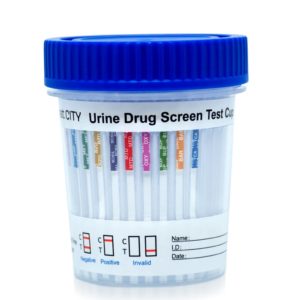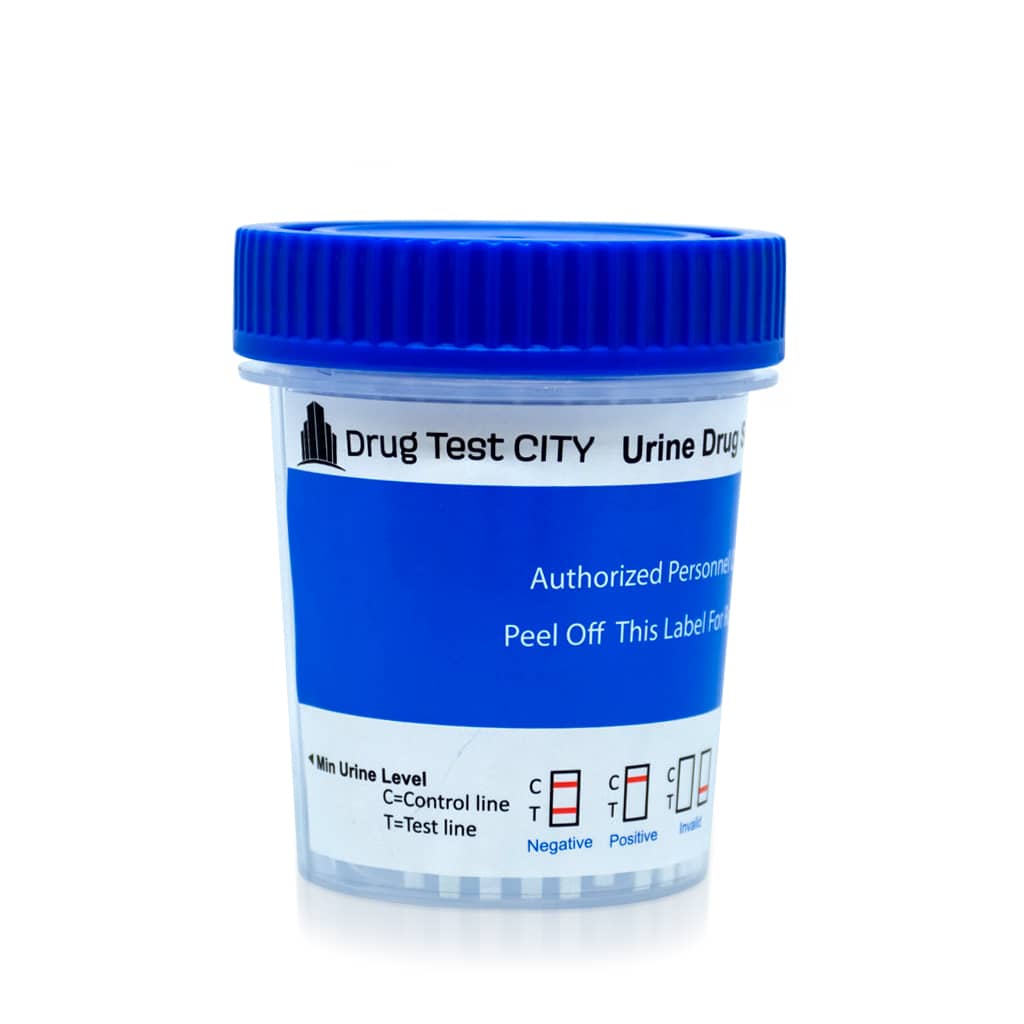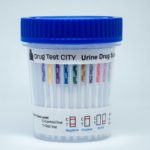A 12 Panel Drug Test can include a number of illicit drugs, but most will commonly test for cocaine, marijuana, opiates, oxycodone, benzodiazepines, methamphetamine, amphetamine, methadone, suboxone, barbiturates, ecstasy and tricyclic antidepressants or PCP.
Since there is no standard for inclusion in 12 panel drug tests, it’s impossible to know for sure which drugs are on a 12 panel test without knowing the product ID and brand. However, these drug tests are often very similar and you can make an informed guess by understanding the different needs and standards of institutions performing drug screens.
The NIDA-5
The first standardization of drug testing in America was developed in the 1980s by the National Institute for Drug Abuse. With help from SAMSHA, they chose the five most commonly abused illegal drugs. These would become standard for DOT testing and other types of employment testing.
The NIDA-5 Drugs Are:
- Cannabis
- Cocaine
- Amphetamine
- Opiates
- Phencyclidine (PCP)
Most of these illegal drugs are still widely abused today, however the legality of some have changed while the presence of others in legal prescription drugs has become widespread.
The use of PCP has dropped significantly. Cannabis is legal in many states. Opiates and amphetamine are used in many over-the-counter drugs.
Modern 12 Panel Drug Tests
Since there are only 13 drug tests that are currently CLIA waived, you will almost always see this configuration for a 12 panel drug test. The most recent drug tests that have received CLIA waivers are alternate metabolites for Methadone and Opiates, but essentially still test for the same drugs.
Urine Drug Test
The most common type of 12 panel drug test is a urine drug test. Urine drug testing is considered the most accurate type of in person drug testing. It is used most commonly in healthcare, the criminal justice system, and addiction medicine. 12 panel urine screens can be used in any setting, but collecting the sample is considered slightly invasive.

During a urine drug screen, a technician instructs the subject to go into a designated drug testing site and produce a urine sample directly into the drug test cup. The technician visually checks the temperature and waits a specified amount of time for the panels to absorb the urine sample. The technician then removes the drug test cover to reveal the results, which are indicated by lines on each panel.
Saliva Drug Test
Saliva drug tests are the second most common type of 12 panel drug test. Saliva drug tests have a shorter detection period, and are considered less invasive than urine drug screens. These features make them ideal for employment drug testing.
During a saliva drug test a technician will provide the subject with a collection device to be inserted into their mouth. The subject will hold the collector in their mouth for a specified period of time, or until an indicator feature confirms that enough sample has been collected. The collector is then combined with the testing device which is designed to extract the saliva into drug test panels.
What Does a 12 Panel Drug Test Check For?
Almost all 12 panel drug tests without exception will test for the most popular recreational drugs and the most widely abused pharmaceutical drugs. The strips for PCP and TCAs are chosen based on customer preference. Neither TCAs or PCP are widely abused at this time.
Cocaine
Cocaine and cocaine derivatives such as free base or crack is a common street drug that can be snorted, smoked or injected. Detection times can be from 2-7 days, depending on the amount used.
THC
Marijuana that is smoked or vaporized is the most common form of THC use. In recent years products that are derived from cannabis such as edibles and oils have become more popular. Marijuana is now legal in some US jurisdictions. In the samples of occasional users THC can be detected for 3 to 7 days, but heavy use can prolong this timeframe.
Opiates
The opiate strip tests for Morphine, Heroin and a number of derivatives. Detection times range from 2-4 days.
Oxycodone
Pain management clinics and physicians often prescribe Oxycodone which is one of the most popular drugs of abuse. This test covers Oxycontin. Percocet, Oxycodone, Oxymorphone, and Hydrocodone. Detection times vary by drug but range from 1 to 4 days.
Benzodiazepines
Benzodiazepines are a popular form of anti anxiety and nervousness medication that is frequently prescribed by medical providers, but also frequently abused. Xanax, diazepam (Valium), cloneazapam (Klonipin), lorazepam (Ativan) are the most common drugs in this class. Detection times range from 3 to 14 days.
Methamphetamines
One of the most common street drugs growing in popularity, methamphetamine includes high grade crystal meth synthesized in Mexico and home brew batches made with common household products and pseudoephederine. The process used to synthesize meth is dangerous and contaminates the surrounding area. Residual chemicals and byproducts from the amateur production methods often taint homemade meth. Urine detection ranges from 2-5 days.
Amphetamines
Common drugs prescribed for ADHD such as Adderall, Ritalin, and Dexedrine will induce a positive result for amphetamine. Methamphetamine also often contains sufficient amounts of amphetamine to trigger a positive result. Urine detection ranges from 2-5 days.
Methadone
Clinics prescribe Methadone as an addiction maintenance drug and also prescribed by physicians as a pain management drug. Detection times range from 3 to 9 days.
Buprenorphine / Suboxone
Suboxone is commonly prescribed by drug treatment physicians as an addiction maintenance drug. It is is most often prescribed to be taken sublingually (absorbed through mucus membranes under the tongue). Several name brand forms also contain an opiate blocker, Naloxone. Detection times range from 3 to 9 days.
Barbiturates
Barbiturates cover a number of prescription central nervous depressants and muscle relaxers such as Phenobarbitol, Seconal and Fioricet. Detection times are 1-5 days.
MDMA / Ecstasy
A class of party drugs that are popular with young adults. Ecstasy is sold in a variety of forms including pills shaped like cartoon characters. Detection times are 1 to 4 days.
Tricyclic Antidepressants
TCAs are a group of anti-depressants that work to increase the levels of serotonin and norepinephrine. Common TCAs are Elavil and Sinequan, but there are approximately a dozen variations identified by this test. Detection times in urine are 1 to 5 days.
Replacement Metabolites
As I mentioned earlier, some test cups have replaced specific metabolites for the original CLIA waived test. These metabolites can be more accurate especially when a program targets a specific drug.
EDDP300 is a metabolite of methadone. It is more consistently secreted in urine samples than methadone itself. Methadone clinics can either replace MTD with EDDP300 or replace another strip with it.
6-MAM10 is one of three active metabolites of heroin. This metabolite can identify heroin abuse in patients that are prescribed other opiates.



